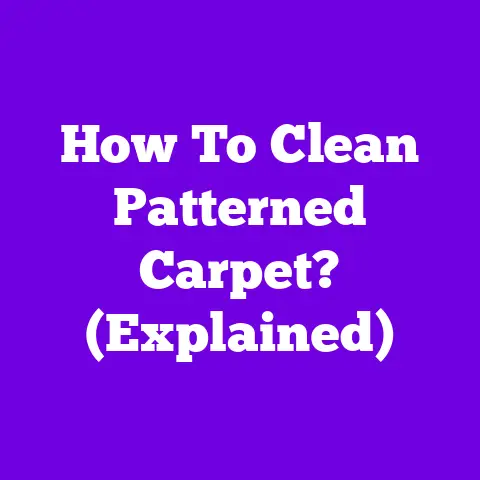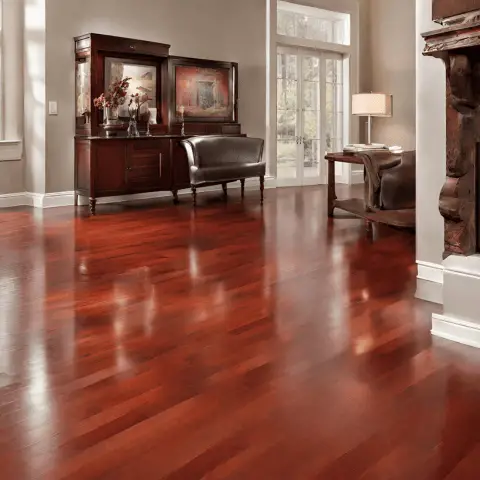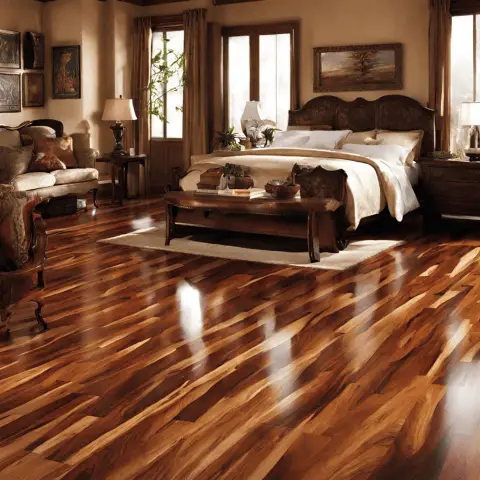How To Clean Loose Lay Vinyl Flooring? (Explained)
Loose lay vinyl flooring has become a popular choice for homeowners due to its durability, affordability, and easy installation. However, like any flooring material, it requires regular cleaning and maintenance to keep it looking its best. In this guide, we’ll walk you through the step-by-step process of effectively cleaning loose lay vinyl flooring to ensure its longevity and aesthetic appeal.
Gather Supplies
Before you begin cleaning your loose lay vinyl flooring, it’s essential to gather the necessary supplies. These include a broom or vacuum cleaner, microfiber mop or soft cloth, pH-neutral floor cleaner, warm water, a bucket, a soft-bristle brush or scrub pad (optional), white vinegar (optional), and mild dish soap (optional).
Preparing the Area
To start, clear the area of any furniture or obstacles. This will give you unrestricted access to the entire flooring surface. Next, use a broom or vacuum cleaner to remove loose dirt and debris. This initial step is crucial in preventing scratching and maintaining the floor’s overall appearance.
Routine Cleaning
1. Dust and Dirt Removal
Begin by using a broom or vacuum cleaner to eliminate any loose dirt and debris from the surface of the loose lay vinyl flooring. Pay extra attention to corners and edges where dirt tends to accumulate.
2. Damp Mopping
Prepare a cleaning solution by mixing warm water with a pH-neutral floor cleaner. Use a microfiber mop or soft cloth to apply the solution to the floor. Mop the area, making sure to wring out the mop or cloth regularly to avoid oversaturation. This step will effectively remove dirt, grime, and most stains from the surface.
3. Rinsing (if needed)
If there is residue left on the floor after mopping, rinse it with clean water. Wring out the mop or cloth thoroughly and go over the floor again to ensure no cleaning solution remains. This step is crucial to prevent any potential build-up that could dull the flooring’s finish.
Deep Cleaning (as needed)
1. Stubborn Stains and Spills
For tougher stains and spills, create a mixture of warm water and mild dish soap. Apply the solution to the affected area and gently scrub with a soft-bristle brush or scrub pad if necessary. Rinse the area thoroughly with clean water and allow it to air dry.
2. Grease and Oil Stains (if applicable)
Mix warm water with mild dish soap to create a cleaning solution. Apply it to the stain and gently rub the area. Rinse thoroughly to remove any soap residue.
3. Removing Scuff Marks (if applicable)
Apply a small amount of white vinegar onto a soft cloth and gently rub the scuff mark. This should effectively lift the mark without damaging the flooring’s surface. Rinse with clean water.
4. Residue from Adhesives or Tapes (if applicable)
If there is adhesive residue on the floor, soften it with warm water or a small amount of rubbing alcohol. Gently scrape with a plastic putty knife, taking care not to scratch the surface.
Drying and Final Steps
Allow the loose lay vinyl flooring to air dry completely. Take this time to inspect the floor for any remaining spots or stains. Once satisfied with the results, replace furniture and return items to their designated places.
Tips for Maintaining Loose Lay Vinyl Flooring
1. Use doormats at entrances to prevent dirt and moisture from being tracked onto the floor.
2. Place felt pads on furniture legs to prevent scratches and scuffs.
3. Avoid using abrasive cleaners or tools that may damage the flooring’s surface.
Conclusion
Regular cleaning and maintenance are essential for preserving the beauty and longevity of your loose lay vinyl flooring. By following the steps outlined in this guide, you can keep your floors looking their best for years to come.
Remember to always refer to the manufacturer’s specific care instructions for your particular type of loose lay vinyl flooring for the best results. With proper care, your flooring will continue to shine and provide comfort and style to your home.






